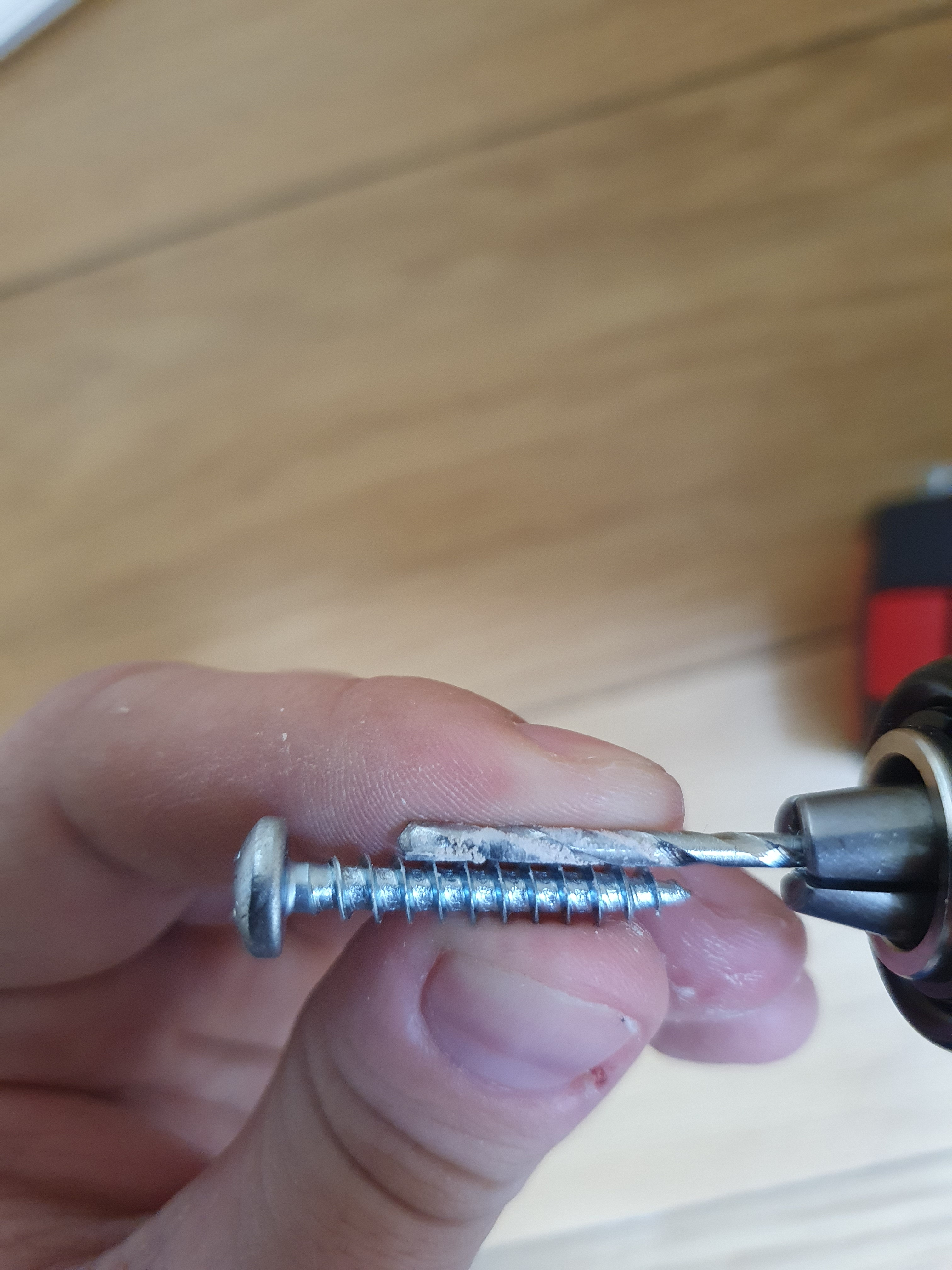We’d like to remind Forumites to please avoid political debate on the Forum.
This is to keep it a safe and useful space for MoneySaving discussions. Threads that are – or become – political in nature may be removed in line with the Forum’s rules. Thank you for your understanding.
📨 Have you signed up to the Forum's new Email Digest yet? Get a selection of trending threads sent straight to your inbox daily, weekly or monthly!
Choosing size for masonry drilling
Comments
-
That explains the pan head screws then. Using countersunk screws in that situation is likely to cause the plastic to split and the fitting will then be insecure.FreshlyCutFlowers said:a screw goes in 4 of these oval holes
https://www.babydan.com/products/safety-gates/safety-gates-for-top-of-stairs/babydan-flex-xl-black
I think the best way forward then is to use the supplied screws in brown (7mm) plugs. The brown ones are more suitable for 5mm dia screws and because you won't have to use as much force to tighten them, the risk of damaging the screws is lower. But tighten them carefully - by hand - to make sure neither the screws nor plastic gets damaged.
It is important to follow the manufacturer's recommendations when using safety-related equipment, so I couldn't advise you use an alternative way of fixing those parts to the wall.
In which case, it is always useful to have some 8 gauge screws around. I'd suggest a range of lengths, so one pack/box each of 8 x 1/2", 8 x 1", and 8 x 1 1/2" - as this would cover nearly all the small fixing jobs you are likely to need in the house. (metric equivalents are about 4.0 x 12, 4.0 x 25, and 4.0 x 40).FreshlyCutFlowers said:Wouldn't mind buying some screws as they can be used elsewhere in the house too!
0 -
When using plugs I'd always finish off tapping it in by using a punch, so as to avoid hammer marks on the wall. An old 5mm furniture bolt makes an ideal punch if the proper tool isn't available. This will make it easy to recess the plug 10mm or more if necessary.neilmcl said:As I mentioned earlier I'd always go with Fischer plugs, particularly their new Duopower ones which can be used in pretty much any application. The issue I have with those Uno plugs and similar is the lip at the head of the plug which means it'll be difficult to have the plug slightly below the wall surface if needed.
I wouldn't use Uno plugs myself, but any 'lip' on normal plugs will fold in as the plug is punched home (or recessed) and if anything will add a little extra material to grip the sides of the hole before the plug properly expands with the screw.
0 -
Thanks for everyone!
I know it's a very small problem to have but it's been great to build some confidence with the advice in here. Will definitely post again when I am unsure!1 -
Finally got around to this today. Drilled pilot holes and discovered that the majority of the length is plaster, is this normal? Holding the screw up to the point where plaster ends. Will I need to get longer screws to secure them properly?
On another note, concrete is bloody hard. Took me 3-4 minutes to drill just that remaining tiny bit for the pilot hole! 0
0 -
How old is the house? Plaster can be really thick on older houses. They used to be lime/sand but later on sand/cement was used, finish with a gypsum skim. In the 70's Carlite started to take over.
It's always better to get into the masonry.
You would be better with an SDS drill for a hard wall.0 -
It's not a "SDS machine". Does it even have 'hammer' option and if it does did you use it?Is it plaster or plasterboard? In any case longer screws would be better and, if the plug is shorter than the screw, hammer it deeper into the hole (e.g. using a round piece of wood or a nail head wit adequate size) so that bigger part of it sits in the concrete.0
-
grumbler said:It's not a "SDS machine".
Maybe so.
Or possibly....
https://www.screwfix.com/p/bosch-2607000982-keyed-chuck-sds-plus-adaptor-13mm/80892
0 -
The house is 1900s though the part I'm drilling in should be newer. I believe its plaster rather than plaster board.
I did use hammer mode when I reached the brick. The 2nd hole seems even tougher, after a minute I made no progress..! Over worrying that I'm doing something wrong. Either way seems like I need to buy new screws after all0 -
If anyone does get an adapter for an SDS, only use it without the hammer action. I've seen one shatter in few seconds when someone tried it.1
-
You need a more powerful drill. It depends what kind of brick or block you are going into.FreshlyCutFlowers said:The house is 1900s though the part I'm drilling in should be newer. I believe its plaster rather than plaster board.
I did use hammer mode when I reached the brick. The 2nd hole seems even tougher, after a minute I made no progress..! Over worrying that I'm doing something wrong. Either way seems like I need to buy new screws after all0
Confirm your email address to Create Threads and Reply

Categories
- All Categories
- 352.9K Banking & Borrowing
- 253.9K Reduce Debt & Boost Income
- 454.7K Spending & Discounts
- 246K Work, Benefits & Business
- 602.1K Mortgages, Homes & Bills
- 177.8K Life & Family
- 259.9K Travel & Transport
- 1.5M Hobbies & Leisure
- 16K Discuss & Feedback
- 37.7K Read-Only Boards




